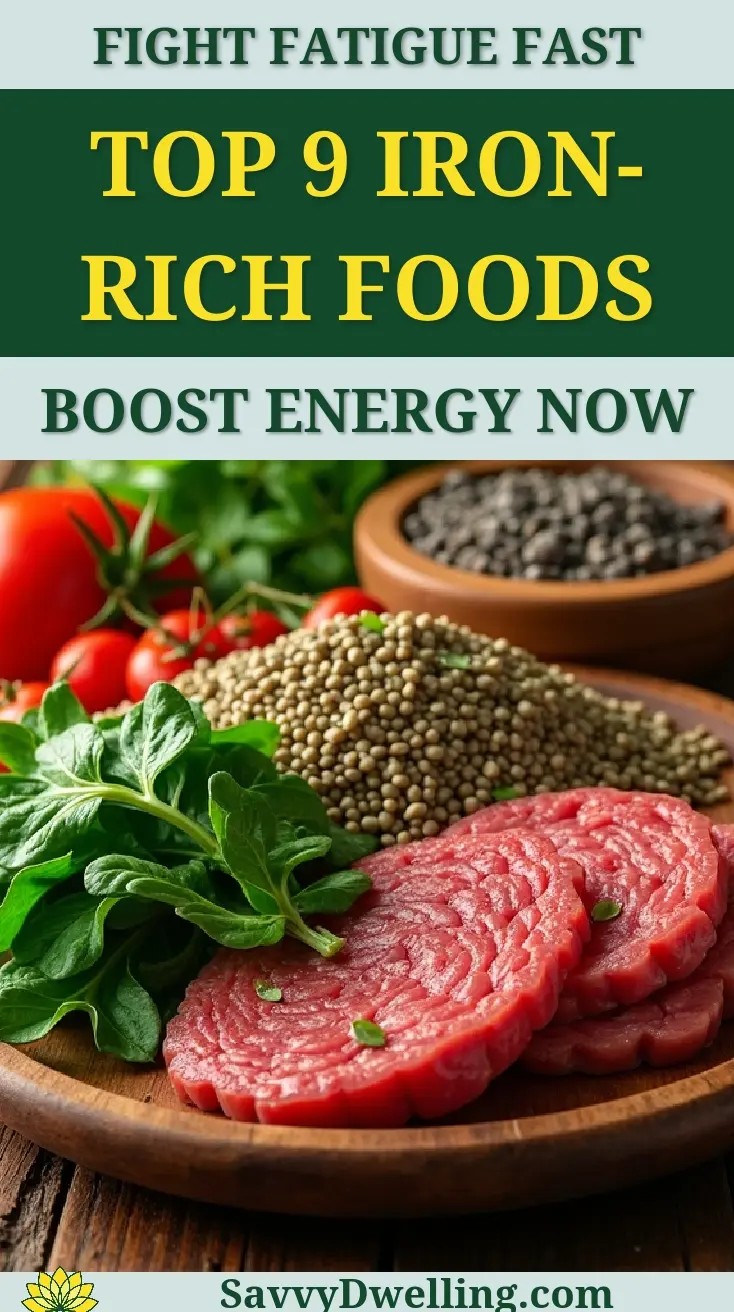What to Eat When You’re Sick With a Cold (10 Best Foods for Recovery)
Feeling miserable with a stuffy nose, scratchy throat, and that familiar heavy feeling in your chest? When a cold strikes, your body craves specific nutrients to support its natural healing process, but figuring out what actually helps versus what might make you feel worse can be overwhelming when you’re already exhausted.
We’ve researched the science behind cold recovery nutrition and tested countless home remedies to bring you the most effective, gentle foods that truly support your body’s fight against illness. This guide breaks down exactly which foods provide the nutrients your immune system needs most, plus simple recipes you can manage even when cooking feels impossible.
Contents
- At a Glance: The Best Solutions
- 1. Chicken Soup and Bone Broth
- 2. Honey
- 3. Citrus Fruits
- 4. Ginger
- 5. Garlic
- 6. Herbal Teas
- 7. Yogurt and Probiotic Foods
- 8. Leafy Greens and Vegetables
- 9. Warm Liquids and Hydrating Foods
- 10. Bananas and Easily Digestible Fruits
- The Science Made Simple: Why Your Body Needs Different Foods When Fighting a Cold
- Common Mistakes to Avoid When Choosing Foods During a Cold
- Frequently Asked Questions
- Final Words
At a Glance: The Best Solutions
When you’re battling a cold, your body needs specific nutrients to support recovery and comfort. The right foods can help soothe symptoms, maintain hydration, and provide gentle nutrition when your appetite is low.These ten foods consistently prove most effective for cold recovery: chicken soup, honey, citrus fruits, ginger, garlic, herbal teas, yogurt, leafy greens, warm liquids, and easily digestible fruits. Each offers unique benefits that work together to support your body’s natural healing process.
Quick Reference Table: Top Foods for Cold Recovery
| Food | Primary Benefit | Best For | How to Use |
|---|---|---|---|
| Chicken Soup | Hydration + warmth | Overall comfort | Sip warm throughout day |
| Honey | Soothes throat | Cough relief | 1-2 tsp in tea or alone |
| Citrus Fruits | Vitamin C support | Immune function | Fresh juice or warm water |
| Ginger | Reduces nausea | Stomach upset | Fresh tea or added to soup |
| Garlic | Natural compounds | Overall wellness | Cooked in broth or soup |
| Herbal Teas | Warmth + hydration | Throat comfort | Multiple cups daily |
| Yogurt | Probiotics | Digestive health | Plain, room temperature |
| Leafy Greens | Vitamins + minerals | Nutrient support | Blended in soup or smoothie |
| Warm Liquids | Hydration | Mucus thinning | Sip frequently |
| Bananas | Easy digestion | Gentle nutrition | Fresh or blended |
Foods to Avoid When Battling a Cold
Certain foods can worsen cold symptoms or slow your recovery process. Avoiding these problematic foods helps your body focus energy on healing rather than processing difficult-to-digest items.Skip dairy products if you notice increased mucus production. While this doesn’t happen to everyone, many people find that milk, cheese, and ice cream make congestion worse during a cold.Processed and sugary foods drain your energy and provide little nutritional value when your body needs quality fuel. Candy, cookies, and packaged snacks can also suppress immune function temporarily.
- Dairy products: May increase mucus in some people
- Sugary foods: Can temporarily weaken immune response
- Fried and fatty foods: Harder to digest when energy is low
- Alcohol: Dehydrates and interferes with sleep quality
- Caffeinated drinks: Can worsen dehydration if consumed excessively
- Spicy foods: May irritate already inflamed throat tissues
- Citrus juices with added sugar: Choose fresh over processed versions
Alcohol deserves special mention because it dehydrates your body when proper hydration is critical for recovery. It also disrupts the quality sleep your immune system needs to function optimally.Trust your body’s signals about what feels right to eat. If something doesn’t appeal to you or makes symptoms worse, listen to that instinct and choose gentler alternatives from the beneficial foods list instead.
1. Chicken Soup and Bone Broth
How It Works to Support Recovery
When you’re sick with a cold, your body craves warm, nourishing liquids that are easy to digest. Chicken soup and bone broth deliver exactly what your system needs during recovery.
The steam from hot soup helps thin mucus in your nasal passages, making it easier to breathe and clear congestion. The warm liquid also soothes your irritated throat while providing hydration that your body desperately needs when fighting off illness.
Bone broth contains amino acids like glycine and proline that support your body’s natural healing processes. The gelatin from slow-cooked bones creates a coating effect in your digestive tract, which feels especially comforting when you’re not feeling well.
What You’ll Need
For homemade chicken soup or bone broth, gather these simple ingredients:
- 1 whole chicken or 2-3 pounds of chicken bones
- 2 carrots, chopped
- 2 celery stalks, chopped
- 1 onion, quartered
- Fresh herbs (parsley, thyme, or dill)
- Salt and pepper to taste
- 8-10 cups of water
Simple Homemade Recipe
Making nourishing soup when you’re feeling unwell doesn’t have to be complicated. This gentle approach creates maximum comfort with minimal effort.
- Place chicken or bones in a large pot with vegetables and herbs
- Cover everything with water, leaving 2 inches of space at the top
- Bring to a gentle boil, then reduce heat to low simmer
- Cook for 2-4 hours, skimming foam occasionally
- Strain the broth and season with salt and pepper
- Add back shredded chicken meat if desired
Store-Bought Alternatives
If cooking feels overwhelming while you’re sick, quality store-bought options can provide similar benefits. Look for organic, low-sodium chicken broth or bone broth from brands like Pacific Foods or Kettle & Fire.
Choose products with minimal ingredients and no artificial additives, as your digestive system may be more sensitive when you’re unwell. Warm the broth gently and sip it throughout the day for continuous comfort.

2. Honey
How It Works to Soothe Symptoms
Honey acts as nature’s cough suppressant and throat soother when you’re battling cold symptoms. Its thick consistency creates a protective coating over irritated throat tissues, reducing the urge to cough.
Raw honey contains antimicrobial compounds that may support your body’s natural defense mechanisms. Studies show that honey can be more effective than some over-the-counter cough medicines for reducing nighttime coughing.
The natural sugars in honey provide quick energy when your appetite is diminished during illness. This gentle fuel source helps maintain your strength without overwhelming your digestive system. Honey is not only a delicious sweetener but also offers many health benefits, such as boosting immunity and providing antioxidants.
What You’ll Need
Keep these honey varieties and complementary ingredients on hand for cold relief:
- Raw, unprocessed honey (Manuka honey offers additional benefits)
- Fresh lemon juice
- Warm water or herbal tea
- Fresh ginger (optional)
- Cinnamon stick (optional)
Best Ways to Use Honey for Colds
The most effective approach is taking honey directly or mixing it with warm liquids. Take one tablespoon of honey straight from the spoon before bedtime to coat your throat overnight. This soothing remedy can be enhanced by exploring other natural options. To get rid of a sore throat fast, consider trying various natural remedies that can provide quick relief and promote healing.
Mix honey into warm (not boiling) water or herbal teas to preserve its beneficial compounds. Adding honey to ginger tea creates a powerful combination that addresses multiple cold symptoms simultaneously.
You can also drizzle honey over plain yogurt or oatmeal if solid foods appeal to you during recovery.
Honey Tea Recipe
This soothing blend combines honey’s throat-coating properties with lemon’s vitamin C content:
- Heat 1 cup of water to warm (not boiling) temperature
- Add 1-2 tablespoons of raw honey
- Squeeze in fresh lemon juice from half a lemon
- Stir gently and sip slowly while warm
- Repeat 2-3 times throughout the day
Safety Note for Children
Never give honey to infants under 12 months old due to the risk of botulism. For children over one year, honey can be an effective natural remedy for cough and throat irritation.
Use smaller amounts for young children – start with half a teaspoon and adjust based on their tolerance and preference.
Also See: The Ultimate Guide to Losing 50 Pounds Safely
3. Citrus Fruits
How They Support Your Immune System
Citrus fruits provide vitamin C and bioflavonoids that support your body’s natural defense systems during cold recovery. While vitamin C won’t cure your cold, adequate levels help maintain immune function when you need it most.
The natural acids in citrus fruits can help thin mucus secretions, making them easier to expel. Fresh citrus juice mixed with warm water creates a gentle throat rinse that soothes irritation while providing hydration.
Citrus fruits also contain folate and potassium, which help maintain energy levels and proper fluid balance when you’re fighting off illness.
What You’ll Need
Stock up on these citrus options that are gentle on sensitive stomachs:
- Fresh lemons (most versatile for warm drinks)
- Oranges (easier to eat when appetite is low)
- Grapefruits (pink varieties are often sweeter)
- Limes (good for variety in warm water)
- Tangerines or mandarins (gentle and easy to peel)
Easy Ways to Add Citrus to Your Diet
When you’re feeling unwell, simple preparations work best. Squeeze fresh lemon into warm water and sip throughout the day for continuous vitamin C intake and hydration.
Peel oranges or tangerines into small segments that are easy to eat when your appetite is diminished. The natural sugars provide gentle energy without overwhelming your digestive system.
Add fresh citrus juice to herbal teas or broths for enhanced flavor and nutritional benefits. The combination of warm liquids and vitamin C creates maximum comfort during recovery.
Warm Lemon Water Recipe
This gentle preparation maximizes citrus benefits while providing soothing warmth:
- Heat 1 cup of water to comfortably warm temperature
- Squeeze juice from half a fresh lemon
- Add a pinch of sea salt for electrolyte balance
- Include 1 teaspoon of honey if desired for throat coating
- Sip slowly while warm, repeat every 2-3 hours
4. Ginger
How It Works to Aid Comfort
Ginger contains compounds called gingerols that may help soothe throat irritation and support digestive comfort when you’re feeling under the weather. These natural compounds work by potentially reducing inflammation in your throat and respiratory passages. Incorporating ginger into your diet can provide numerous health benefits, including boosting your immune system. In fact, there are 10 proven health benefits of ginger that highlight its importance for overall wellness.
The warming properties of ginger can provide immediate relief for cold symptoms while supporting your body’s natural healing processes. Many people find that ginger helps settle their stomach when cold medications or congestion make them feel nauseous.
What You’ll Need
- Fresh ginger root (about 1-2 inches per serving)
- Hot water or your favorite broth
- Honey for sweetening (optional)
- Lemon juice (optional)
- Fine grater or sharp knife
Simple Ginger Preparations
Fresh ginger works better than powdered versions when you’re deciding what to eat when sick with cold symptoms. The active compounds remain more potent in fresh ginger, giving you better results for comfort and wellness support. Incorporating ginger into your diet can provide numerous health benefits, enhancing overall wellness. From boosting immunity to aiding digestion, the 10 amazing health benefits of ginger highlight just how powerful this root can be for your health.
Fresh Ginger Tea Recipe
- Peel and slice 1-2 inches of fresh ginger root into thin pieces
- Add ginger slices to 2 cups of boiling water
- Simmer for 10-15 minutes until the water turns golden
- Strain out the ginger pieces
- Add honey and lemon juice to taste
- Sip slowly while warm for maximum comfort
Ginger in Soup and Broth
Adding fresh grated ginger to your chicken soup or vegetable broth creates a warming, comforting meal that’s perfect when you’re wondering what to eat during a cold. Simply grate 1-2 teaspoons of fresh ginger directly into your hot soup during the last few minutes of cooking.
The ginger will infuse the broth with its beneficial compounds while adding a gentle, warming flavor that can help clear congestion naturally.
5. Garlic
How It Works to Support Wellness
Garlic contains allicin, a sulfur compound that forms when garlic cloves are crushed or chopped. This compound may help support your immune system’s natural defenses when you’re fighting off cold symptoms.
Raw garlic provides the most potent benefits, but cooked garlic in broths and soups still offers wellness support while being gentler on your stomach. The key is consuming garlic regularly throughout your recovery period rather than in large amounts all at once.
What You’ll Need
- Fresh garlic cloves (2-3 per day)
- Vegetable or chicken broth
- Olive oil or butter
- Sharp knife
- Small saucepan
Best Ways to Include Garlic
When you’re considering what should I eat when I have a cold, garlic works best when incorporated into warm, soothing foods rather than eaten raw on an empty stomach. This approach prevents digestive discomfort while still providing the beneficial compounds your body needs.
Crushing or mincing garlic and letting it sit for 5-10 minutes before cooking allows more allicin to form, maximizing the potential benefits for your wellness routine.
Garlic Broth Recipe
- Mince 4-5 fresh garlic cloves and let sit for 10 minutes
- Heat 1 tablespoon olive oil in a saucepan over medium heat
- Add minced garlic and cook for 30 seconds until fragrant
- Pour in 2 cups of low-sodium broth
- Simmer for 15 minutes to blend flavors
- Strain if desired, or leave garlic pieces for extra flavor
- Sip warm throughout the day

6. Herbal Teas
How They Work to Provide Comfort
Herbal teas offer gentle hydration while delivering plant compounds that may help soothe cold symptoms naturally. Different herbs provide varying benefits – some focus on throat comfort, others on relaxation, and some on supporting your body’s natural defenses.
The warm steam from herbal teas can help ease congestion while the liquid keeps you hydrated, making them an ideal choice for what to eat when you have cold symptoms. Unlike caffeinated beverages, most herbal teas won’t interfere with the rest your body needs for recovery.
What You’ll Need
- Dried or fresh herbs (chamomile, peppermint, echinacea)
- Hot water (not boiling – around 200°F)
- Tea infuser or strainer
- Honey for sweetening
- Lemon slices (optional)
- Covered mug or teapot
Best Herbal Teas for Cold Symptoms
Different herbal teas address various aspects of cold discomfort. Chamomile offers gentle relaxation properties, peppermint may help with congestion, and echinacea has traditionally been used to support wellness during seasonal challenges.
Rotating between different herbal teas throughout the day ensures you stay hydrated while potentially addressing multiple symptoms naturally.
Chamomile and Peppermint Blend
- Combine 1 teaspoon dried chamomile with 1/2 teaspoon dried peppermint
- Place herbs in tea infuser or directly in mug
- Pour hot water over herbs and cover
- Steep for 5-7 minutes for full flavor extraction
- Remove herbs and add honey to taste
- Inhale the steam before drinking for added comfort
Echinacea Tea Benefits
Echinacea tea has been traditionally used to support the immune system during seasonal wellness challenges. When you’re deciding what to eat when down with a cold, echinacea tea provides a caffeine-free option that many people find comforting. This herb is known for its ability to boost the immune system, helping your body fight off infections more effectively.
Steep echinacea tea for 10-15 minutes to extract the beneficial compounds, and consider adding a slice of fresh ginger for additional warming properties and flavor enhancement.
7. Yogurt and Probiotic Foods
How They Support Digestive Health
When you’re battling a cold, your digestive system often feels the effects too. Probiotic-rich foods like yogurt help maintain the balance of beneficial bacteria in your gut, which plays a crucial role in supporting your body’s natural defenses.
Your gut houses approximately 70% of your immune system. Cold medications, stress from being ill, and changes in eating patterns can disrupt this delicate ecosystem. Probiotics work to restore this balance while you recover.
The cool, creamy texture of yogurt also soothes throat irritation. Unlike many dairy products that might increase mucus production for some people, plain yogurt with live cultures typically doesn’t cause this issue.
What You’ll Need
- Plain Greek yogurt with live active cultures
- Kefir or drinking yogurt
- Fermented vegetables like sauerkraut (small portions)
- Miso paste for broths
- Fresh or frozen berries for added nutrients
- Raw honey for natural sweetness
Best Probiotic Options When Sick
Greek yogurt stands out as the top choice when you’re wondering what to eat when sick with cold symptoms. It contains more protein than regular yogurt and typically has a higher concentration of probiotics.
Kefir offers even more diverse probiotic strains than yogurt. This fermented milk drink provides up to 61 different strains of beneficial bacteria, compared to yogurt’s typical 2-3 strains. Its liquid consistency makes it easier to consume when your throat feels raw.
Avoid flavored yogurts loaded with sugar, as excess sugar can potentially suppress immune function. Stick to plain varieties and add your own natural sweeteners like honey or mashed banana.
Smoothie Recipe with Yogurt
This gentle smoothie combines probiotics with immune-supporting nutrients while being easy on your throat:
- Blend ¾ cup plain Greek yogurt with ½ cup coconut water
- Add ½ frozen banana and ½ cup frozen berries
- Include 1 tablespoon raw honey and ½ teaspoon fresh grated ginger
- Blend until smooth and creamy
- Serve immediately while cold for maximum throat-soothing benefits
8. Leafy Greens and Vegetables
How They Provide Essential Nutrients
Your body craves vitamins and minerals when fighting off cold symptoms, and leafy greens deliver these nutrients in concentrated doses. Dark leafy vegetables contain vitamin C, folate, and antioxidants that support your body’s recovery processes without requiring much digestive energy.
Spinach, kale, and Swiss chard provide vitamin K, which aids in reducing inflammation. These vegetables also contain nitrates that help maintain healthy circulation, ensuring nutrients reach all parts of your body efficiently.
Many people avoid vegetables when wondering what should I eat when I have a cold, thinking they’re too heavy. However, properly prepared greens actually provide gentle nutrition that your weakened system can process easily.
What You’ll Need
- Fresh spinach or baby spinach
- Kale (stems removed)
- Swiss chard
- Carrots and celery
- Onions and garlic
- Low-sodium vegetable or chicken broth
- Olive oil or coconut oil
Easy Ways to Add Vegetables
Blend spinach into smoothies where you won’t taste it but will gain its nutritional benefits. Start with just a handful mixed with fruit and yogurt.
Wilted greens work perfectly in warm broths and soups. Adding vegetables to liquid-based meals makes them easier to digest while ensuring you get essential nutrients when your appetite is reduced.
Steam vegetables until they’re very tender, then mash them slightly. This pre-digestion process makes nutrients more bioavailable when your digestive system is working harder to support recovery.
Gentle Vegetable Soup Recipe
This mild soup provides concentrated nutrition without overwhelming your system:
- Sauté 1 diced onion and 2 minced garlic cloves in 1 tablespoon olive oil
- Add 4 cups low-sodium vegetable broth and bring to a simmer
- Include 2 diced carrots and 2 diced celery stalks, cook for 10 minutes
- Stir in 4 cups chopped spinach or kale, cook until wilted
- Season lightly with salt and pepper, serve warm
- Blend partially if you prefer a smoother texture
9. Warm Liquids and Hydrating Foods
How Proper Hydration Aids Recovery
Fever, congestion, and increased mucus production all contribute to fluid loss when you’re sick. Maintaining proper hydration helps thin mucus secretions, supports kidney function in filtering toxins, and maintains the blood volume needed for effective circulation.
Warm liquids provide additional benefits beyond hydration. The steam helps clear nasal passages while the warmth soothes throat irritation. Your body also doesn’t need to expend energy warming cold fluids to body temperature.
Dehydration can worsen cold symptoms and extend recovery time. Even mild dehydration affects immune cell function and makes it harder for your body to regulate temperature during fever.
What You’ll Need
- Filtered water
- Coconut water (unsweetened)
- Herbal teas (caffeine-free varieties)
- Clear broths (vegetable, chicken, or bone broth)
- Warm lemon water ingredients
- Electrolyte solutions (low-sugar options)
Best Hydrating Options
Room temperature or warm water remains the gold standard for hydration. Aim for pale yellow urine as an indicator of adequate fluid intake, though some cold medications can affect urine color.
Clear broths count toward fluid intake while providing sodium and other electrolytes lost through fever and congestion. The combination of fluids and electrolytes in broth makes it more effective than plain water for maintaining hydration during illness.
Avoid caffeinated beverages, which can contribute to dehydration. Also skip sugary drinks that might temporarily suppress immune function when your body needs all its resources focused on recovery.
Coconut Water Benefits
Natural coconut water provides potassium, magnesium, and sodium without artificial additives. These electrolytes become depleted through fever sweating and increased respiratory rate.
Coconut water contains about 600mg of potassium per cup, compared to sports drinks that typically contain 30-50mg. This higher potassium content helps maintain proper muscle and nerve function during recovery.
Choose unsweetened varieties to avoid unnecessary sugar. The natural sweetness makes it more appealing than plain water when your taste preferences change during illness.
Warm Broth Variations
Vegetable broth provides hydration plus nutrients from simmered vegetables. Add fresh herbs like parsley or dill for additional vitamins and minerals.
Miso broth combines hydration with probiotics. Dissolve 1 tablespoon miso paste in hot water for a quick, nourishing drink that’s easier on digestion than heavy soups.
Bone broth delivers collagen and amino acids that support tissue repair. The glycine in bone broth has anti-inflammatory properties that may help reduce cold symptom severity. Sip it warm throughout the day for continuous hydration and nutrition.
10. Bananas and Easily Digestible Fruits
How They Support Gentle Nutrition
When your stomach feels queasy or your appetite has vanished, bananas provide gentle nutrition that your body can easily process without extra stress. These soft fruits contain natural sugars that give you quick energy without overwhelming your digestive system.
The potassium in bananas helps maintain proper fluid balance, which becomes more important when you’re losing fluids through fever or congestion. Bananas also contain vitamin B6, which supports your immune system’s ability to produce infection-fighting antibodies.
What makes bananas particularly helpful is their binding effect on loose stools, a common issue when you’re sick. They’re also naturally bland, making them perfect when stronger flavors feel too intense.
What You’ll Need
- Ripe bananas (yellow with small brown spots work best)
- Plain yogurt or milk (optional)
- Honey for added sweetness (if desired)
- Other soft fruits like applesauce or pears
- Ice cubes for smoothies
Best Fruits for Sensitive Stomachs
Applesauce ranks as one of the gentlest options because it’s already broken down and contains pectin, which can help firm up loose stools. Choose unsweetened varieties to avoid added sugars that might upset your stomach further.
Pears offer similar benefits to bananas but with added fiber and vitamin C. Canned pears in natural juice work well when fresh fruit feels too acidic. Melons like cantaloupe and honeydew provide hydration along with vitamins A and C.
Avoid acidic fruits like oranges, pineapple, or berries if your throat is sore or your stomach feels sensitive. Save these nutrient-dense options for when you’re feeling stronger.
Banana Smoothie Recipe
- Blend 1 ripe banana with ½ cup plain yogurt and ¼ cup milk
- Add 1 teaspoon honey if you need extra sweetness
- Include a handful of ice cubes for a refreshing texture
- Blend until smooth and creamy
- Sip slowly to avoid overwhelming your stomach
The Science Made Simple: Why Your Body Needs Different Foods When Fighting a Cold
How Cold Symptoms Affect Your Appetite
Your stuffy nose blocks scent receptors, which handle about 80% of what we perceive as taste. This explains why food to eat when sick with cold often tastes bland or unappealing during illness.
Fever increases your metabolic rate, making your body burn through energy stores faster while simultaneously reducing your desire to eat. This creates a challenging cycle where you need more nutrition but want less food.
Inflammation in your throat and sinuses can make swallowing uncomfortable, naturally steering you toward softer, warmer options. Your body’s wisdom often guides you toward what to eat when you have cold symptoms that will provide comfort.
Why Hydration Becomes More Important
Fever causes increased sweating and breathing rate, leading to higher fluid losses than normal. Your body needs extra water to produce the increased mucus that helps trap and remove virus particles from your respiratory system.
Proper hydration helps thin mucus secretions, making them easier to expel through coughing or nose-blowing. This natural clearing process is one of your body’s primary defense mechanisms against cold viruses.
Dehydration can worsen fatigue and headaches, two symptoms that already make you feel miserable when sick. Warm liquids provide hydration while the steam helps open congested airways.
The Role Of Nutrients in Supporting Recovery
Vitamin C supports white blood cell function, though it won’t prevent colds or dramatically shorten their duration. Zinc plays a role in immune cell development and communication, which is why foods to eat when you have a cold often include zinc-rich options.
Protein becomes more important during illness because your body uses amino acids to produce antibodies and repair damaged tissues. However, your body can only process moderate amounts at a time, making frequent small meals more effective than forcing large portions.
B vitamins support energy production at the cellular level, helping combat the fatigue that makes everything feel harder when you’re sick. These nutrients work best when obtained from whole foods rather than supplements.

Common Mistakes to Avoid When Choosing Foods During a Cold
Forcing Yourself to Eat Too Much
Your decreased appetite serves a purpose – it allows your body to redirect energy from digestion toward fighting the infection. Overwhelming your system with large meals can actually slow recovery by diverting resources.
Small, frequent meals work better than three large ones when you’re determining what to eat when sick with cold symptoms. Think tablespoon-sized portions every hour or two rather than full plates three times daily.
Listen to your body’s signals about what sounds appealing. If nothing seems appetizing, focus on staying hydrated and try again in an hour or two.
Relying Only on Processed Foods
Crackers and toast might feel safe, but they provide mainly refined carbohydrates without the nutrients your immune system needs. Processed foods often contain high sodium levels that can worsen dehydration and lack the vitamins found in whole foods.
Canned soups can be convenient, but many contain excessive sodium and preservatives. When choosing what is the best food to eat when sick, opt for low-sodium versions or make simple broths at home.
Sugary drinks and snacks can temporarily spike energy but often lead to crashes that worsen fatigue. They may also suppress immune function when consumed in large amounts.
Ignoring Your Body’s Hydration Signals
Thirst becomes less reliable when you’re sick, especially if you have a fever or are breathing through your mouth due to congestion. Dark yellow urine indicates dehydration, while pale yellow suggests adequate fluid intake.
Waiting until you feel thirsty means you’re already behind on fluid needs. Set gentle reminders to sip liquids throughout the day, even if you don’t feel like drinking.
Cold beverages might feel harsh on a sore throat, while room temperature or warm options often feel more soothing. Ice chips can provide hydration if drinking feels difficult.
Eating Foods That Increase Mucus Production
Dairy products don’t actually increase mucus production, but they can make existing mucus feel thicker and more noticeable. If dairy bothers you when sick, try plant-based alternatives like almond or oat milk.
Highly processed, sugary, or fried foods can promote inflammation, potentially making congestion feel worse. These foods also provide little nutritional value when your body needs quality fuel for recovery. Including anti-inflammatory foods in your diet can support healing and improve overall health. Fruits, vegetables, nuts, and fatty fish are great choices to help fight inflammation in the body.
Spicy foods might temporarily clear sinuses, but they can irritate an already inflamed throat. Save the hot sauce for when you’re feeling better and focus on gentler options while recovering.
Frequently Asked Questions
When is the Best Time to Start Eating These Recovery Foods After Symptoms Begin?
It’s ideal to begin adjusting your diet as soon as you notice the first signs of a cold, such as a scratchy throat or fatigue. Early introduction of hydrating and nutrient-dense foods can help bolster your immune response from the start, potentially reducing the severity and duration of your illness. Don’t wait until you’re completely bedridden; even small, gentle portions can make a difference.
Can I Combine Multiple Recovery Foods in One Meal for Better Effect?
Yes, combining foods can be highly effective! For instance, adding fresh ginger and a squeeze of lemon to a warm herbal tea creates a soothing drink that addresses congestion and provides vitamin C. Just ensure combinations are simple and easy to digest to avoid overwhelming your system while it’s fighting off the cold.
What Should I Eat if I Have a Sore Throat and Find It Hard to Swallow?
Opt for soft, lukewarm, or cool foods that coat the throat. Blended soups, applesauce, or plain yogurt are excellent choices as they require minimal chewing and swallowing. Avoid acidic, spicy, or rough-textured foods that could cause further irritation. When dealing with a sore throat, it’s essential to choose foods that are easy to swallow and soothing. Foods like warm broths can provide hydration and comfort, making them ideal during discomfort.
Are There Vegetarian or Vegan Alternatives to Some Of the Recommended Foods Like Chicken Soup?
Absolutely! Mushroom or vegetable broth can serve as a hearty substitute for chicken soup, offering similar hydration and comfort. For honey alternatives in teas, agave syrup or vegan-friendly elderberry syrup can provide sweetness, though they may not have the same antibacterial properties, so focus on other immune-supportive options like garlic or citrus.
How Often Should I Consume These Foods Throughout the Day When I’m Sick?
Aim for small, frequent meals or snacks every 2-3 hours to maintain energy and hydration without burdening your digestive system. For example, sip broth in the morning, have a banana mid-day, and enjoy a light vegetable soup for dinner. Listening to your appetite is key-don’t force eating if you’re not hungry.
Is It Safe to Eat Dairy Products Like Yogurt When I Have a Cold, Since Some Say It Increases Mucus?
The link between dairy and mucus production is not well-supported by science for most people. Probiotic-rich yogurt can actually support gut health and immunity. However, if you personally experience increased phlegm after dairy, try lactose-free yogurt or plant-based alternatives like coconut yogurt. Moderation is generally fine unless you have a known intolerance.
Also See: 6 Best Foods to Help Women Lose Belly Fat
Final Words
Your body knows how to heal itself, and the right foods can provide the gentle support it needs during recovery. These ten nutrient-rich options work together to keep you hydrated, nourished, and comfortable while your immune system does its important work. Remember that small, frequent portions often work better than forcing large meals when you’re feeling unwell.
Start with one or two foods that appeal to you most right now, whether that’s a warm cup of ginger tea or a comforting bowl of chicken soup. Listen to your body’s signals and focus on staying hydrated above all else. Recovery takes time, so be patient with yourself as you gradually return to your normal eating patterns.
For more practical wellness tips and home solutions that actually work, check out Savvy Dwelling where we share research-backed advice to help you feel your best. Your health journey matters, and we’re here to support you with reliable information you can trust.


